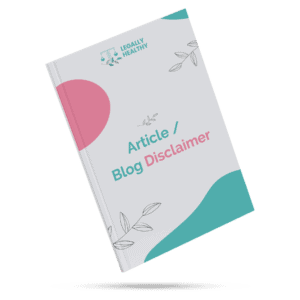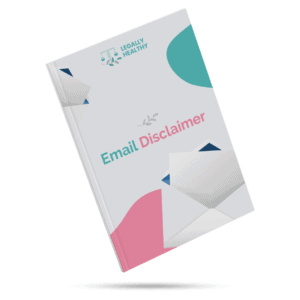Marketing a health and wellness business comes with a unique set of challenges. Unlike other industries, health professionals must adhere to AHPRA’s strict advertising regulations, which prohibit common marketing tactics such as client testimonials, before-and-after photos, promotional urgency, and misleading claims.
This can make it feel difficult to differentiate yourself, build trust, and grow your practice. But compliance doesn’t have to mean invisibility. By using strategic, AHPRA-compliant marketing tactics, you can still attract new patients while maintaining professional integrity and avoiding legal risks.
At Saphir Studios, we specialise in marketing strategies that balance compliance and visibility. In this guide, we’ll cover:
- How to position your practice effectively without testimonials
- Ways to create a sense of urgency within AHPRA’s guidelines
- SEO, paid ads, and authority-building techniques to attract new patients
- Examples of compliance-friendly marketing alternatives
- The consequences of non-compliance and how to avoid them
1. Understanding AHPRA’s Advertising Rules
Before implementing any marketing strategy, it’s important to understand what AHPRA allows and prohibits.
What You CAN Do in Your Marketing:
- Provide factual, educational content about conditions and treatments (without exaggeration)
- Explain your qualifications, experience, and services
- Use SEO and Google Ads to get found online
- Share professional insights, research, and case studies (without patient testimonials)
- List pricing information (as long as all associated costs are disclosed)
- Communicate true appointment availability (e.g., “Now accepting new patients” or “3 slots available this week” if factual)
What You CANNOT Do:
- Use patient testimonials or reviews on any platform
- Make misleading claims about treatments or results
- Guarantee results or suggest superiority over competitors
- Use before-and-after photos to promote treatments
- Create false urgency (e.g., “Only 2 spots left—book now!” if untrue)
Failing to comply can lead to fines, reputational damage, and even legal action. Now, let’s explore how to work around these restrictions.
2. How to Stand Out Without Testimonials or Reviews
Craft a Strong Unique Value Proposition (UVP)
If you can’t use patient testimonials, you must make it immediately clear why a patient should choose you over another provider. Your UVP should answer:
- What makes your approach unique?
- Who do you serve best?
- What’s the key benefit patients can expect (without making guarantees)?
Example: “We specialise in sports injury recovery using evidence-based physiotherapy techniques tailored to active professionals.”
Action Step: Write a one-sentence UVP and use it on your website, social media, and ads.
Use Case Studies Instead of Testimonials
While testimonials are prohibited, anonymised case studies that describe a treatment process are allowed.
Non-Compliant: “Dr. Smith changed my life—best chiropractor ever!” Compliant Alternative: “A 42-year-old patient with chronic neck pain improved mobility and reduced discomfort after completing a 12-week physiotherapy program.”
Action Step: Develop 3-5 anonymised case studies that focus on process, not personal experience.
Focus on SEO & Google Ads
Without word-of-mouth testimonials, you need SEO and paid ads to ensure potential patients find you first.
- Optimise for Local SEO: Target “[your service] in [your city]” (e.g., “Psychologist in Sydney”)
- Use Google Ads for High-Intent Searches: Target searches like “how to manage back pain” or “best treatment for stress” (without making claims).
Non-Compliant Ad: “Guaranteed relief from back pain in 3 sessions!” Compliant Alternative: “Looking for relief from back pain? Learn about evidence-based treatment options.”
Action Step: Ensure your website and ads are optimised for high-intent keywords.
3. Creating a Sense of Urgency—Without Violating AHPRA Rules
Many businesses use urgency (e.g., “Book now before prices increase!”) to drive action, but AHPRA doesn’t allow misleading scarcity tactics.
What You CAN Say:
- “Now accepting new patients—limited appointments available.”
- “We have 3 slots open this week for new physiotherapy assessments.”
- “Due to high demand, we are currently booking 2 weeks in advance.”
Use Seasonal & Event-Based Offers
- “Start fresh in the new year—book your wellness check before January 15th.”
- “Join our upcoming stress management webinar—limited spots available!”
Action Step: Plan seasonal or real-time availability campaigns.
4. What Happens If You Don’t Follow AHPRA Regulations?
Failing to comply with AHPRA’s advertising guidelines can have serious consequences, including:
- Fines & Legal Action – Individuals can face fines up to $5,000, and corporations up to $10,000 per breach.
- Reputational Damage – Non-compliance can erode patient trust and harm your credibility.
- Regulatory Scrutiny – Repeat violations can result in AHPRA investigations or practice restrictions.
Solution: Regularly review your marketing materials, ensuring they align with AHPRA’s latest regulations.
Action Step: Conduct a compliance check of your website, ads, and social media content.
Final Thoughts: Growing Your Health Business the Right Way
AHPRA’s advertising restrictions may feel limiting, but with the right strategies, you can still market effectively while staying compliant.
By focusing on:
- A strong UVP
- SEO & paid ads
- Educational content & case studies
- Real-time availability & seasonal marketing
… you can grow your business confidently without risking compliance issues.
This article was written by Saphir Studios in collaboration with Legally Healthy to help health professionals navigate ethical marketing strategies while ensuring full compliance with AHPRA regulations.
Featured Products
-
Email Disclaimer Template
$15.00 -
Privacy Policy Template (AUS)
$120.00



